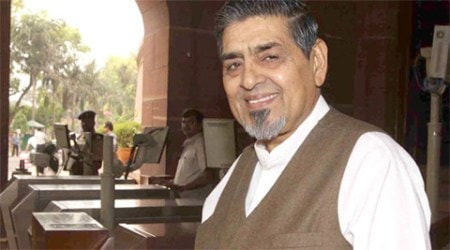 1984: India’s Guilty Secret, Author: Pav Singh, Publication: Rupa Publications India
1984: India’s Guilty Secret, Author: Pav Singh, Publication: Rupa Publications India
The savage conspiracy to kill hundreds of Sikh men, rape women, plunder their homes and mock their religious beliefs in the wake of Indira Gandhi’s assassination is undoubtedly one of the blackest moments in independent India’s history. But UK-based human rights activist Pav Singh, while recounting the tragedy, is perhaps swayed by his emotions into painting an even darker picture than the reality.
Singh is correct in blaming the Indian government for terming as a “riot”, what was, in fact, a completely one-sided attack on a helpless community with the connivance of the authorities. The country’s media is even more guilty for unquestioningly taking the cue and using the term “riots” for what could more accurately be described as a minor pogrom. The media, regrettably, did not really provide a full picture of the extent of the atrocity at the start, with some notable exceptions such as Indian Express. But Singh’s description of the events as a genocidal massacre comparable with Cambodia, Rwanda and the Holocaust is an unnecessary exaggeration, which does no service to the cause of human rights. Inflating the casualty figure to 8,000 from the commonly accepted figure of 3,000 deaths, claiming falsely that the Congress put out pictures of the Sikh killers shooting Indira Gandhi on its election billboards to vilify the Sikh community — and other instances of hyperbole — detract from the book’s credibility.
Undeniably, there was state and Congress complicity in both the bestial behavior and the cover-up that followed. After two inquiry commissions and seven investigations, no one was held guilty in the Trilokpuri butchery, where Sikhs were slaughtered as their neighbours simply stood by. Out of the 3,163 arrested in Delhi, just 30 were convicted. In Delhi, targets were identified using the gurdwara voter lists. Within hours, weapons were distributed to the murder squads and buses provided to Sikh neighbourhoods.
Singh suggests what is commonly believed in political circles in Delhi, that even before Gandhi’s death the local Congress was preparing the grounds to create a backlash against the Sikhs — with an eye on the forthcoming general election. Her untimely death set off the spark which turned into an inferno, the extent of which, probably, the perpetrators of the original plan had not anticipated. The author quotes a Congress worker as saying, “The Sikhs had to be taught a ‘small lesson’ but matters ‘had got out of hand’.’’ This was the party worker’s explanation as to why the mobs completely disappeared after three days.
According to Tarlochan Singh, press secretary to President Zail Singh, a meeting of Congress leaders including Arun Nehru, HKL Bhagat and Jagdish Tytler took place on October 31, even before Rajiv Gandhi’s arrival at the hospital. The slogan ‘blood for blood’ was coined as the rallying cry. It is a pity, however, that the author has been unable to unearth more clinching evidence of the culpability of the masterminds. The role of the police was as shameful as the politicians. They did not intercede while the mobs went on a rampage.
The enormity of the crimes of 1984 need to be written about — both to make the international community aware and to serve as a warning to our younger generation of the depths of inhumanity to which an excitable mob can descend, when spurred on by cynical political interests. The lacuna is that the author has few new details to offer, either of the conspiracy or as to why the violence was restricted largely to poorer, newly inhabited quarters in the outlying areas of the city. It is unfair to tar the majority of Indians as being anti-Sikh, ignoring the countless incidents of non- Sikhs protecting their Sikh neighbours.
For all the latest Lifestyle News, download Indian Express App
Get assembly election result LIVE updates from each constituency in Tripura, Nagaland and Meghalaya


























